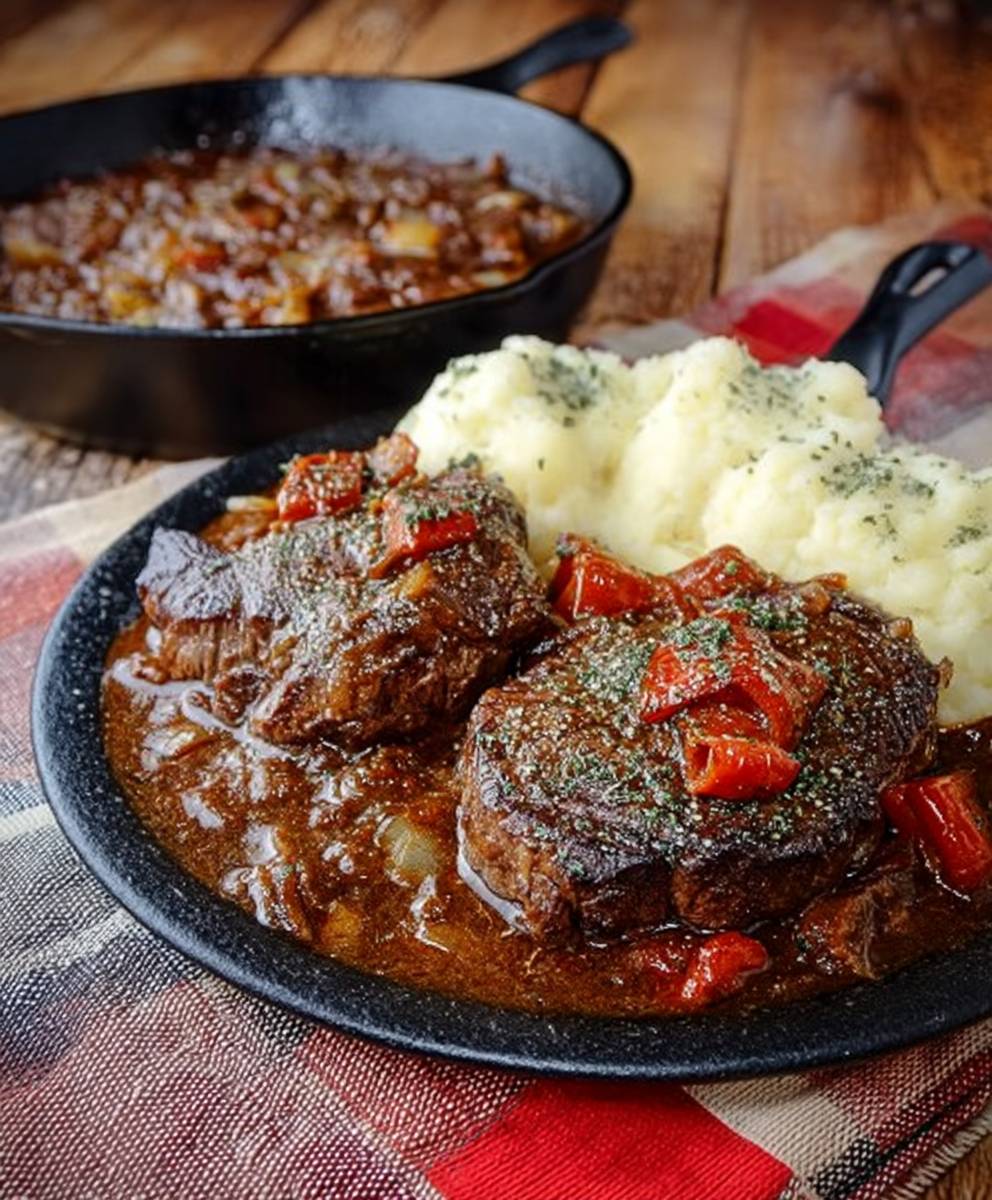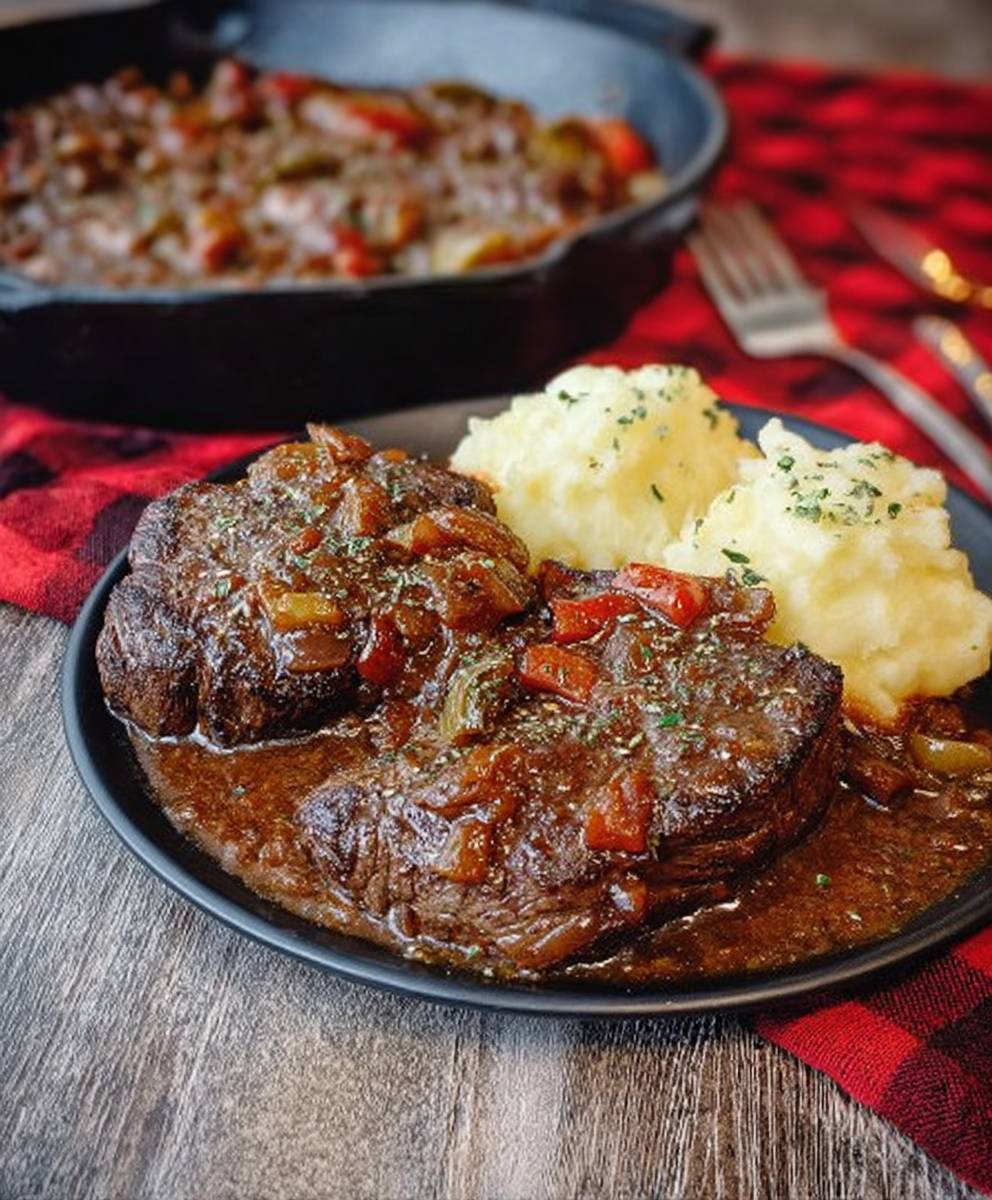Firehouse Steak: the name alone conjures images of hearty appetites and robust flavors, doesn’t it? Imagine sinking your teeth into a perfectly seared steak, its surface kissed with a smoky char, while the inside remains juicy and tender. This isn’t just any steak; it’s a culinary tribute to the hardworking firefighters who need a quick, satisfying, and incredibly delicious meal after a long shift.
While the exact origins of Firehouse Steak are shrouded in a bit of delicious mystery, the story often goes that firehouses across the country developed their own variations of this simple yet satisfying dish. It’s a testament to resourcefulness and the need for a protein-packed meal that can be prepared with minimal fuss. Think about it: firefighters are known for their camaraderie and their ability to make the most of what they have on hand. This steak embodies that spirit perfectly.
What makes Firehouse Steak so beloved? It’s the perfect combination of simplicity and flavor. The beauty of this recipe lies in its ability to transform a relatively inexpensive cut of steak into a restaurant-worthy experience. People love it because it’s quick to prepare, incredibly flavorful, and satisfyingly filling. The sear creates a delightful crust that gives way to a tender interior, making each bite a textural delight. Plus, the customizable nature of the seasonings allows you to tailor the flavor profile to your exact liking. Whether you’re a seasoned grill master or a novice cook, Firehouse Steak is a guaranteed crowd-pleaser that will leave everyone asking for seconds!
Ingredients:
- 2 (12-16 ounce) Ribeye Steaks, about 1.5 inches thick
- 2 tablespoons Olive Oil
- 2 tablespoons Butter, unsalted
- 4 cloves Garlic, minced
- 1 medium Yellow Onion, thinly sliced
- 1 Green Bell Pepper, thinly sliced
- 1 Red Bell Pepper, thinly sliced
- 8 ounces Cremini Mushrooms, sliced
- 1/2 cup Beef Broth
- 1/4 cup Worcestershire Sauce
- 2 tablespoons Dijon Mustard
- 1 tablespoon Hot Sauce (such as Tabasco or Frank’s RedHot)
- 1 teaspoon Dried Thyme
- 1 teaspoon Dried Oregano
- 1/2 teaspoon Smoked Paprika
- Salt and freshly ground Black Pepper, to taste
- Fresh Parsley, chopped, for garnish (optional)
- Crusty Bread, for serving (optional)
Preparing the Steaks:
- Bring the steaks to room temperature: Take the ribeye steaks out of the refrigerator about 30-45 minutes before you plan to cook them. This allows them to cook more evenly. Pat them dry with paper towels; this is crucial for getting a good sear.
- Season generously: Season both sides of the steaks liberally with salt and freshly ground black pepper. Don’t be shy! The seasoning is key to a flavorful crust.
Searing the Steaks:
- Heat the skillet: Place a large cast-iron skillet (or a heavy-bottomed skillet) over high heat. Add the olive oil and let it heat up until it’s shimmering and almost smoking. This is important for achieving a good sear.
- Sear the steaks: Carefully place the steaks in the hot skillet, making sure not to overcrowd the pan. If your skillet isn’t large enough, sear the steaks one at a time. Sear for 3-4 minutes per side, without moving them, until a deep, golden-brown crust forms.
- Add butter and aromatics: Add the butter and minced garlic to the skillet. As the butter melts, tilt the skillet and use a spoon to baste the steaks with the melted butter and garlic. This adds flavor and helps to keep the steaks moist. Continue basting for about 1 minute per side.
- Check the internal temperature: Use a meat thermometer to check the internal temperature of the steaks. For medium-rare, aim for 130-135°F (54-57°C); for medium, aim for 135-145°F (57-63°C). Remember that the temperature will continue to rise slightly as the steaks rest.
- Rest the steaks: Remove the steaks from the skillet and place them on a cutting board. Tent them loosely with foil and let them rest for at least 10 minutes. This allows the juices to redistribute throughout the meat, resulting in a more tender and flavorful steak.
Preparing the Firehouse Sauce:
- Sauté the vegetables: In the same skillet (don’t wipe it out!), add the sliced onions, green bell pepper, and red bell pepper. Sauté over medium heat for about 5-7 minutes, or until the vegetables are softened and slightly caramelized.
- Add the mushrooms: Add the sliced cremini mushrooms to the skillet and continue to sauté for another 3-5 minutes, or until the mushrooms are tender and have released their moisture.
- Deglaze the pan: Pour in the beef broth and scrape up any browned bits from the bottom of the skillet. These browned bits are packed with flavor and will add depth to the sauce.
- Add the sauce ingredients: Stir in the Worcestershire sauce, Dijon mustard, hot sauce, dried thyme, dried oregano, and smoked paprika. Bring the sauce to a simmer and cook for about 5-7 minutes, or until it has thickened slightly. Taste and adjust the seasoning with salt and pepper as needed.
Assembling and Serving:
- Slice the steaks: After the steaks have rested, slice them against the grain into thin slices. This will make them easier to eat and more tender.
- Serve with the sauce: Arrange the sliced steaks on a platter or individual plates. Spoon the firehouse sauce generously over the steaks, making sure to get plenty of the vegetables.
- Garnish and serve: Garnish with fresh chopped parsley, if desired. Serve immediately with crusty bread for soaking up the delicious sauce.
Tips for the Perfect Firehouse Steak:
- Quality of Steak: The quality of the ribeye steak is crucial for the best results. Look for well-marbled steaks with a good amount of fat. This fat will render during cooking, adding flavor and moisture to the meat.
- Cast Iron is Key: A cast-iron skillet is ideal for searing steaks because it retains heat exceptionally well and distributes it evenly. If you don’t have a cast-iron skillet, use a heavy-bottomed stainless steel skillet.
- Don’t Overcrowd the Pan: Overcrowding the pan will lower the temperature and prevent the steaks from searing properly. If necessary, sear the steaks in batches.
- Use a Meat Thermometer: A meat thermometer is the best way to ensure that your steaks are cooked to your desired level of doneness. Insert the thermometer into the thickest part of the steak, avoiding any bone.
- Resting is Essential: Resting the steaks after cooking is crucial for allowing the juices to redistribute throughout the meat. This will result in a more tender and flavorful steak.
- Adjust the Heat: If the vegetables are browning too quickly while making the sauce, reduce the heat to medium-low. You want them to soften and caramelize, not burn.
- Spice it Up: Feel free to adjust the amount of hot sauce to your liking. If you prefer a milder sauce, use less hot sauce or omit it altogether.
- Add a Splash of Wine: For an even richer sauce, add a splash of red wine to the skillet after deglazing with the beef broth. Let the wine reduce slightly before adding the remaining sauce ingredients.
- Make it Ahead: The firehouse sauce can be made ahead of time and stored in the refrigerator for up to 3 days. Reheat it gently before serving.
- Serving Suggestions: Firehouse steak is delicious served with mashed potatoes, roasted vegetables, or a simple salad. It’s also great on sandwiches or in tacos.
Variations:
- Different Cuts of Steak: While ribeye is the classic choice for firehouse steak, you can also use other cuts of steak, such as New York strip, sirloin, or flank steak. Adjust the cooking time accordingly.
- Add More Vegetables: Feel free to add other vegetables to the sauce, such as mushrooms, zucchini, or eggplant.
- Creamy Sauce: For a creamier sauce, stir in a tablespoon or two of heavy cream or sour cream at the end of cooking.
- Spicy Version: Add a pinch of red pepper flakes or a chopped jalapeño pepper to the sauce for an extra kick.
- Cheese Topping: Sprinkle shredded cheese, such as provolone or mozzarella, over the steaks before serving.

Conclusion:
So, there you have it! This Firehouse Steak recipe isn’t just another steak recipe; it’s an experience. The intense sear, the smoky flavor, and the juicy, tender interior combine to create a steak that’s truly unforgettable. It’s the kind of meal that makes you close your eyes and savor every single bite. Trust me, your taste buds will thank you.
But why is this a must-try? Well, beyond the incredible flavor profile, it’s surprisingly simple to make. You don’t need fancy equipment or years of culinary experience. With just a few key ingredients and a little bit of attention, you can achieve restaurant-quality results right in your own kitchen. Plus, the bold flavors are guaranteed to impress your family and friends. Imagine serving this up at your next barbecue you’ll be the star of the show!
Serving Suggestions and Variations:
Now, let’s talk about how to make this Firehouse Steak even more amazing. While it’s fantastic on its own, it pairs beautifully with a variety of sides. For a classic combination, try serving it with creamy mashed potatoes and roasted asparagus. The richness of the potatoes complements the steak perfectly, while the asparagus adds a touch of freshness. Alternatively, you could opt for a lighter side dish like a simple green salad with a vinaigrette dressing. This will help to balance out the richness of the steak.
If you’re feeling adventurous, you can also experiment with different variations of the recipe. For example, you could try using a different cut of steak, such as a ribeye or a New York strip. Each cut will have its own unique flavor and texture, so it’s fun to experiment and see which one you prefer. You could also try adding different herbs and spices to the marinade. A little bit of rosemary or thyme can add a wonderful depth of flavor. And if you like a little bit of heat, you could add a pinch of red pepper flakes to the marinade.
Another great variation is to create a delicious pan sauce using the drippings from the steak. Simply deglaze the pan with a little bit of red wine or beef broth, and then add a pat of butter to create a rich and flavorful sauce. This is a fantastic way to elevate the dish and add even more depth of flavor.
Don’t be afraid to get creative and experiment with different flavors and techniques. The most important thing is to have fun and enjoy the process. Cooking should be an enjoyable experience, so don’t be afraid to try new things and put your own spin on the recipe.
I truly believe that this Firehouse Steak recipe is a winner. It’s delicious, easy to make, and versatile enough to be adapted to your own personal preferences. So, what are you waiting for? Grab your ingredients, fire up the grill (or your cast iron skillet), and get ready to experience steak perfection.
I’m so excited for you to try this recipe! Once you do, I would absolutely love to hear about your experience. Did you make any variations? What sides did you serve with it? What did your family and friends think? Share your photos and stories in the comments below. I can’t wait to see what you create!
Happy cooking!
Firehouse Steak: The Ultimate Guide to Cooking a Perfect Steak
Juicy ribeye steaks seared to perfection and smothered in a flavorful "Firehouse" sauce loaded with onions, peppers, mushrooms, and a spicy kick.
Ingredients
- 2 (12-16 ounce) Ribeye Steaks, about 1.5 inches thick
- 2 tablespoons Olive Oil
- 2 tablespoons Butter, unsalted
- 4 cloves Garlic, minced
- 1 medium Yellow Onion, thinly sliced
- 1 Green Bell Pepper, thinly sliced
- 1 Red Bell Pepper, thinly sliced
- 8 ounces Cremini Mushrooms, sliced
- 1/2 cup Beef Broth
- 1/4 cup Worcestershire Sauce
- 2 tablespoons Dijon Mustard
- 1 tablespoon Hot Sauce (such as Tabasco or Frank’s RedHot)
- 1 teaspoon Dried Thyme
- 1 teaspoon Dried Oregano
- 1/2 teaspoon Smoked Paprika
- Salt and freshly ground Black Pepper, to taste
- Fresh Parsley, chopped, for garnish (optional)
- Crusty Bread, for serving (optional)
Instructions
- Bring the ribeye steaks to room temperature: Take the ribeye steaks out of the refrigerator about 30-45 minutes before you plan to cook them. This allows them to cook more evenly. Pat them dry with paper towels; this is crucial for getting a good sear.
- Season generously: Season both sides of the steaks liberally with salt and freshly ground black pepper. Don’t be shy! The seasoning is key to a flavorful crust.
- Heat the skillet: Place a large cast-iron skillet (or a heavy-bottomed skillet) over high heat. Add the olive oil and let it heat up until it’s shimmering and almost smoking. This is important for achieving a good sear.
- Sear the steaks: Carefully place the steaks in the hot skillet, making sure not to overcrowd the pan. If your skillet isn’t large enough, sear the steaks one at a time. Sear for 3-4 minutes per side, without moving them, until a deep, golden-brown crust forms.
- Add butter and aromatics: Add the butter and minced garlic to the skillet. As the butter melts, tilt the skillet and use a spoon to baste the steaks with the melted butter and garlic. This adds flavor and helps to keep the steaks moist. Continue basting for about 1 minute per side.
- Check the internal temperature: Use a meat thermometer to check the internal temperature of the steaks. For medium-rare, aim for 130-135°F (54-57°C); for medium, aim for 135-145°F (57-63°C). Remember that the temperature will continue to rise slightly as the steaks rest.
- Rest the steaks: Remove the steaks from the skillet and place them on a cutting board. Tent them loosely with foil and let them rest for at least 10 minutes. This allows the juices to redistribute throughout the meat, resulting in a more tender and flavorful steak.
- Sauté the vegetables: In the same skillet (don’t wipe it out!), add the sliced onions, green bell pepper, and red bell pepper. Sauté over medium heat for about 5-7 minutes, or until the vegetables are softened and slightly caramelized.
- Add the mushrooms: Add the sliced cremini mushrooms to the skillet and continue to sauté for another 3-5 minutes, or until the mushrooms are tender and have released their moisture.
- Deglaze the pan: Pour in the beef broth and scrape up any browned bits from the bottom of the skillet. These browned bits are packed with flavor and will add depth to the sauce.
- Add the sauce ingredients: Stir in the Worcestershire sauce, Dijon mustard, hot sauce, dried thyme, dried oregano, and smoked paprika. Bring the sauce to a simmer and cook for about 5-7 minutes, or until it has thickened slightly. Taste and adjust the seasoning with salt and pepper as needed.
- Slice the steaks: After the steaks have rested, slice them against the grain into thin slices. This will make them easier to eat and more tender.
- Serve with the sauce: Arrange the sliced steaks on a platter or individual plates. Spoon the firehouse sauce generously over the steaks, making sure to get plenty of the vegetables.
- Garnish and serve: Garnish with fresh chopped parsley, if desired. Serve immediately with crusty bread for soaking up the delicious sauce.
Notes
- Quality of Steak: The quality of the ribeye steak is crucial for the best results. Look for well-marbled steaks with a good amount of fat. This fat will render during cooking, adding flavor and moisture to the meat.
- Cast Iron is Key: A cast-iron skillet is ideal for searing steaks because it retains heat exceptionally well and distributes it evenly. If you don’t have a cast-iron skillet, use a heavy-bottomed stainless steel skillet.
- Don’t Overcrowd the Pan: Overcrowding the pan will lower the temperature and prevent the steaks from searing properly. If necessary, sear the steaks in batches.
- Use a Meat Thermometer: A meat thermometer is the best way to ensure that your steaks are cooked to your desired level of doneness. Insert the thermometer into the thickest part of the steak, avoiding any bone.
- Resting is Essential: Resting the steaks after cooking is crucial for allowing the juices to redistribute throughout the meat. This will result in a more tender and flavorful steak.
- Adjust the Heat: If the vegetables are browning too quickly while making the sauce, reduce the heat to medium-low. You want them to soften and caramelize, not burn.
- Spice it Up: Feel free to adjust the amount of hot sauce to your liking. If you prefer a milder sauce, use less hot sauce or omit it altogether.
- Add a Splash of Wine: For an even richer sauce, add a splash of red wine to the skillet after deglazing with the beef broth. Let the wine reduce slightly before adding the remaining sauce ingredients.
- Make it Ahead: The firehouse sauce can be made ahead of time and stored in the refrigerator for up to 3 days. Reheat it gently before serving.
- Serving Suggestions: Firehouse steak is delicious served with mashed potatoes, roasted vegetables, or a simple salad. It’s also great on sandwiches or in tacos.





Leave a Comment